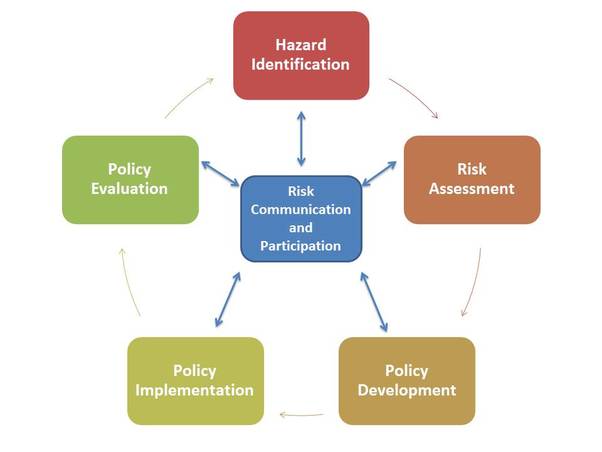|
This week we have another collaborative post from guest blogger Namrata Sengupta. She’ll be introducing the concept of risk communication in environmental science and toxicology. Next week we’ll be following up on her introduction with a more detailed look at ways of approaching risk communication approaches and a review of a recent webinar hosted by NOAA. Enjoy!
“It is ironic to think that man might determine his own future by something so seemingly trivial as the choice of an insect spray.” – Rachel Carson, Silent Spring Background In 1962, the American conservation biologist Rachel Carson published a book called ‘Silent Spring’. She described the effects of man-made contaminants and their potential of harming wildlife. The book detailed a study on thirty five bird species which were nearing extinction caused by these contaminants entering water bodies, and the story facilitated the ban on DDT in 1972. The book is considered as the scientific foundation for modern environmentalism in America, including the establishment of the United States Environmental Protection Agency (US EPA) in 1970 as well as the Clean Air Act (CAA) and Clean Water Act (CWA) later that same decade. Carson was an early pioneer of the field of risk communication. Her book powerfully displayed the combined intellect and thoughtfulness of a person who was a scientist, poet, nature-lover and activist all in one. She inspired a generation of people to become well-informed and to realize the importance of getting involved in environmental health research. In the modern age of chemical industrialization, the existence of the CWA and CAA has played a major role in protecting both wildlife and human health. Even 50 years since the publication of Carson’s novel, environmental science and toxicology continues to grow. From decoding manmade chemicals, understanding the complexities of cancer, or using advanced statistical techniques to explaining ecosystem dynamics, our field has expanded not just to labs and journals but also to applications and implications in public health policy and decision-making. Environmental scientists and toxicologists now realize the relevance of their work in policy making but are also constantly critiqued by industry, government, and policy makers who are using their work. Risk Assessment The US EPA developed guidance and structure for characterizing the hazards associated with exposure to environmental contaminants to both wildlife and a human population, which is called risk assessment. The purpose of a risk assessment is to evaluate the potential for exposure to a chemical in the environment as well as the potential impact of these chemicals. The process of characterizing the potential for chemicals to harm humans or wildlife through risk assessment is an important component of policy making. It provides scientific support for decision making and limits the pervasive social and governmental influences. But regulatory science is not always clear, neither to the government nor to the public. Because of this lack of clarity, the EPA is working to develop better strategies not only for risk assessments but also for communicating the implications of risk to the general public. What is Risk Communication? Risk communication is the interaction between environmental risk assessment scientists, managers, policy makers, and public stakeholders. For effective risk communication to occur, all impacted stakeholders for a particular setting should be a part of the communication process from the beginning. It is extremely important to identify relevant stakeholders (generally done as a part of risk management strategy) and to develop communication streams to fit their needs. It is also crucial to engage in two-way communication, where stakeholders are able to voice their perspectives, questions, and opinions directly to scientists. One of the biggest challenges of risk communication is that it is generally the most overlooked aspect of risk assessment and management. Scientists often forget the importance of being able to communicate effectively about their research and scientific opinions when working with a diverse audience. This lack of effective communication has occasionally challenged the ability of industry and government officials to interpret the scientific evidence which can inform regulatory affairs. Another challenge is how much information should be shared directly with the general audience. In today’s world of the Internet and mass media playing critical roles in science communication, scientists need to be cautious about the interpretation of their data. Strategic training, information sharing sessions, and orientation with the public should be planned by both scientists and policy makers when discussing topics which affect wildlife and human populations. Why is Risk Communication important? Our environment, food, and personal health are threatened by exposure to environmental pollutants and bacterial hazards on a daily basis. While there are research and quality control safeguards towards protecting us and our ecosystems, there are times when we may encounter an additional crisis event, such as an oil spill. The communication associated with both daily and event-based risks needs to be a continual and evolving process and not just for a one-time crisis management initiative. The topics widely covered under the umbrella of risk communication are generally: 1. The levels of risk (environmental/health) 2. The significance of the particular risk 3. The regulations, decisions, and policies in place to deal with these risks Previously, risk communication was often thought of as a “linear process”, but now experts and all concerned stakeholders understand that it is a “cyclic process”.
In next week’s post, we’ll go into more detail on methods for how to use the cyclic process of risk communication. A big thanks to Namrata for introducing us to risk assessment and communication! For more of her writings, be sure to check out her science and outreach blog.
Comments are closed.
|
Archives
August 2018
Categories
All
|
Addtext


 RSS Feed
RSS Feed